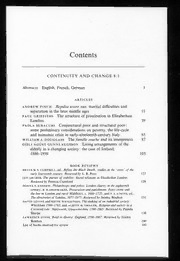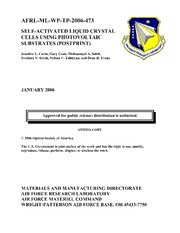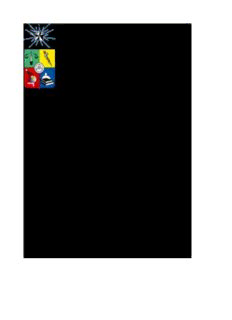
Introduction to Scientific Programming with Python PDF
Preview Introduction to Scientific Programming with Python
SIMULA SPRINGER BRIEFS ON COMPUTING 006 Joakim Sundnes Introduction to Scientific Programming with Python Simula SpringerBriefs on Computing Volume 6 Editor-in-Chief Aslak Tveito, Fornebu, Norway Series Editors Are Magnus Bruaset, Fornebu, Norway Kimberly Claffy, San Diego, USA Magne Jørgensen, Fornebu, Norway Olav Lysne, Fornebu, Norway Andrew McCulloch, La Jolla, USA Fabian Theis, Neuherberg, Germany Karen Willcox, Cambridge, USA Andreas Zeller, Saarbrücken, Germany Springer and Simula have launched a new book series, Simula SpringerBriefs on Computing, which aims to provide introductions to select research in computing. The series presents both a state-of-the-art disciplinary overview and raises essential critical questions in the field. Published by SpringerOpen, all Simula SpringerBriefs on Computing are open access, allowing for faster sharing and wider dissemination of knowledge. Simula Research Laboratory is a leading Norwegian research organization which specializes in computing. The book series will provide introductory volumes on the main topics within Simula’s expertise, including communications technology, software engineering and scientific computing. By publishing the Simula SpringerBriefs on Computing, Simula Research Laboratory acts on its mandate of emphasizing research education. Books in this series are published only by invitation from a member of the editorial board. More information about this series at http://www.springer.com/series/13548 Joakim Sundnes Introduction to Scientific Programming with Python Joakim Sundnes Simula Research Laboratory Lysaker, Norway Simula SpringerBriefs on Computing ISBN 978-3-030-50355-0 ISBN 978-3-030-50356-7 (eBook) https://doi.org/10.1007/978-3-030-50356-7 Mathematics Subject Classification (2010): 65D15, 65D25, 65D30, 68-01, 68N01, 68N19, 97-04 © The Editor(s) (if applicable) and the Author(s) 2020. This book is an open access publication. Open Access This book is licensed under the terms of the Creative Commons Attribution 4.0 International License (http://creativecommons.org/licenses/by/4.0/), which permits use, sharing, adap- tation, distribution and reproduction in any medium or format, as long as you give appropriate credit to the original author(s) and the source, provide a link to the Creative Commons license and indicate if changes were made. The images or other third party material in this book are included in the book's Creative Commons license, unless indicated otherwise in a credit line to the material. If material is not included in the book's Creative Commons license and your intended use is not permitted by statutory regulation or exceeds the permitted use, you will need to obtain permission directly from the copyright holder. The use of general descriptive names, registered names, trademarks, service marks, etc. in this publi- cation does not imply, even in the absence of a specific statement, that such names are exempt from the relevant protective laws and regulations and therefore free for general use. The publisher, the authors and the editors are safe to assume that the advice and information in this book are believed to be true and accurate at the date of publication. Neither the publisher nor the authors or the editors give a warranty, expressed or implied, with respect to the material contained herein or for any errors or omissions that may have been made. The publisher remains neutral with regard to jurisdictional claims in published maps and institutional affiliations. This Springer imprint is published by the registered company Springer Nature Switzerland AG The registered company address is: Gewerbestrasse 11, 6330 Cham, Switzerland Dedicated to the memory of Hans Petter Langtangen. Foreword Dear reader, Our aim with the series Simula SpringerBriefs on Computing is to provide compact introductions to selected fields of computing. Entering a new field of research can be quite demanding for graduate students, postdocs, and experienced researchers alike: the process often involves reading hundreds of papers, and the methods,resultsandnotationstylesusedoftenvaryconsiderably,whichmakesfor atime-consumingandpotentiallyfrustratingexperience.Thebriefsinthisseriesare meant to ease the process by introducing and explaining important concepts and theories in a relatively narrow field, and by posing critical questions on the fun- damentalsofthatfield.Atypicalbriefinthisseriesshouldbearound100pagesand should be well suited as material for a research seminar in a well-defined and limited area of computing. We have decided to publish all items in this series under the SpringerOpen framework, as this will allow authors to use the series to publish an initial version of their manuscript that could subsequently evolve into a full-scale book on a broader theme. Since the briefs are freely available online, the authors will not receive any direct income from the sales; however, remuneration is provided for everycompletedmanuscript.Briefsarewritten onthebasisofaninvitationfroma member of the editorial board. Suggestions for possible topics are most welcome and can be sent to aslak@simula.no. January 2016 Prof. Aslak Tveito CEO Dr. Martin Peters Executive Editor Mathematics Springer Heidelberg, Germany vii Preface This book was originally written as a set of lecture notes to the book A 1 PrimeronScientificProgrammingwithPython byHansPetterLangtangen , andcanbeusedeitherasasupplementtothatbookoronitsown,asacom- pact introduction to scientific programming. Langtangen’s book and these lecture notes, have formed the core of an introductory course on scientific programmingattheUniversityofOslo(INF1100/IN1900,10ETCScredits). The course has been running since 2007 and is primarily taken by first-year students of mathematics, engineering, physics, chemistry, and geosciences. The writing of these lecture notes, and their subsequent evolution into a book, were primarily motivated by two factors. The first was that many stu- dents found the nearly 1000 pages of Langtangen’s book a bit overwhelming as a first introduction to programming. This effect could be mostly psy- chological, since the book is well structured and suited for selective study of chapters and sections, but the student feedback from students still indi- cated the need for a more compact and (literally) lightweight introduction. The second factor was that, sadly, Hans Petter Langtangen passed away in 2016, and his book has therefore not been updated to the newest versions of Python and the various tools introduced in the book. This issue could also be mostly a mental obstacle, since the differences between the Python versions are quite small, and only minor edits are needed to make most of the examples from the original book run on the newest Python platform. However,thebookisintendedasanintroductiontoprogramming,andwhen learning an entirely new topic, any minor inconsistency is a potential source ofconfusion.Ithereforesawtheneedforanupdateddocumentwhereallthe code examples would run without any modifications on the most common Python platforms. That said, in spite of these minor shortcomings as an in- troductory text, Langtangen’s book is still an excellent resource on scientific programming in Python. Compared with the present book, it covers a much 1 Hans Petter Langtangen, A Primer on Scientific Programming with Python, 5th edition,Springer-Verlag,2016. ix x Preface broader set of topics and includes more examples, more detailed discussions andexplanations,andmanymoreusefulprogramminghintsandtips.Ihighly recommend it as a supplement to these notes for anyone with ambitions to become an expert scientific programmer. The present book was written specifically for the course Introduction to programming for scientific applications (IN1900)attheUniversityofOslo.It follows exactly the same teaching philosophy and general structure as Lang- tangen’s original book, with the overarching idea that the only way to learn toprogramistowriteprograms.Readingtheoryisuseful,butwithoutactual programming practice, the value is very limited. The IN1900 course is there- fore largely based on problem solving and programming exercises, and this book’s main purpose is to prepare the students for such tasks by providing a brief introduction to fundamental programming concepts and Python tools. The presentation style is compact and pragmatic, and includes a large num- ber of code examples to illustrate how new concepts work and are applied in practice. The examples are a combination of pieces of code (so-called code snippets), complete Python programs, and interactive sessions in a Python shell. Readers are encouraged to run and modify the codes to gain a feel for how the various programming concepts work. Source code for most of the examples, as well as Jupyter notebooks for all the chapters, is provided in the online resources accompanying this book. The typical reader of the book will be a student of mathematics, physics, chemistry, or other natural science, and many of the examples will be famil- iartothesereaders.However,therapidlyincreasingrelevanceofdatascience means that computations and scientific programming will be of interest to a growing group of users. No typical data science tools are presented in this book, but the reader will learn tasks such as reading data from files, sim- ple text processing, and programming with mathematics and floating point computations. These are all fundamental building blocks of any data science application,andtheyareessentialtoknowbeforedivingintomoreadvanced and specialized tools. No prior knowledge of programming is needed to read this book. We start with some very simple examples to get started with programming and then moveontointroducefundamentalprogrammingconceptssuchasloops,func- tions, if-tests, lists, and classes. These generic concepts are supplemented by more specific and practical tools for scientific programming, primarily plotting and array-based computations. The book’s overall purpose is to in- troduce the reader to programming and, in particular, to demonstrate how programmingcanbeanextremelyusefulandpowerfultoolinmanybranches of the natural sciences. Manypeoplehavecontributedtothisbook,inparticularmycolleaguesat SimulaResearchLaboratoryandtheUniversityofOslo.However,thecontri- butionsofProfessorHansPetterLangtangenstandheadandshouldersabove everyone else. He has been an extremely inspiring teacher, mentor, and col- league throughout my scientific career; he developed the course that is now Preface xi IN1900; and he wrote the book on which these notes are based. Throughout these lecture notes I have extensively copied ideas, presentation style, and code examples from his original book, simply because I find them excellent for introducing programming in a scientific context. If it were not for Hans Petter I would clearly never have written these notes. I would probably not bewritingthiseitherifhehadnot,sadly,passedawayin2016–therewould be no need to, because he would surely have written a far better and more extensive book himself. May 2020 Joakim Sundnes
The list of books you might like

$100m Offers

Do Epic Shit

Shatter Me Complete Collection (Shatter Me; Destroy Me; Unravel Me; Fracture Me; Ignite Me)

A Thousand Boy Kisses

By Bread Alone

Volet Accident Vasculaire Cérébral (AVC)

Continuity and Change 1993: Vol 8 Table of Contents

Geoderma 2006: Vol 136 Table of Contents

Greek Government Gazette: Part 4, 2006 no. 87

Bills as enacted, 2006-2007, No.81-151

The Echo

Terrestrial isopods (Crustacea, Oniscidea) from Rocas Atoll, northeastern Brazil

Schur functors and equivariant resolutions

DTIC ADA462932: Self-Activated Liquid Crystal Cells Using Photovoltaic Substrates (Postprint)

Bear Hug

IDENTIFICACIÓN DE ACTIVIDADES PARA EL COSTEO ABC

C# 6 and .NET Core 1.0: Modern Cross-Platform Development

Tiempos y cosas

Organic Chemistry as a Second Language

ERIC EJ793928: Fractions as Division: The Forgotten Notion?




